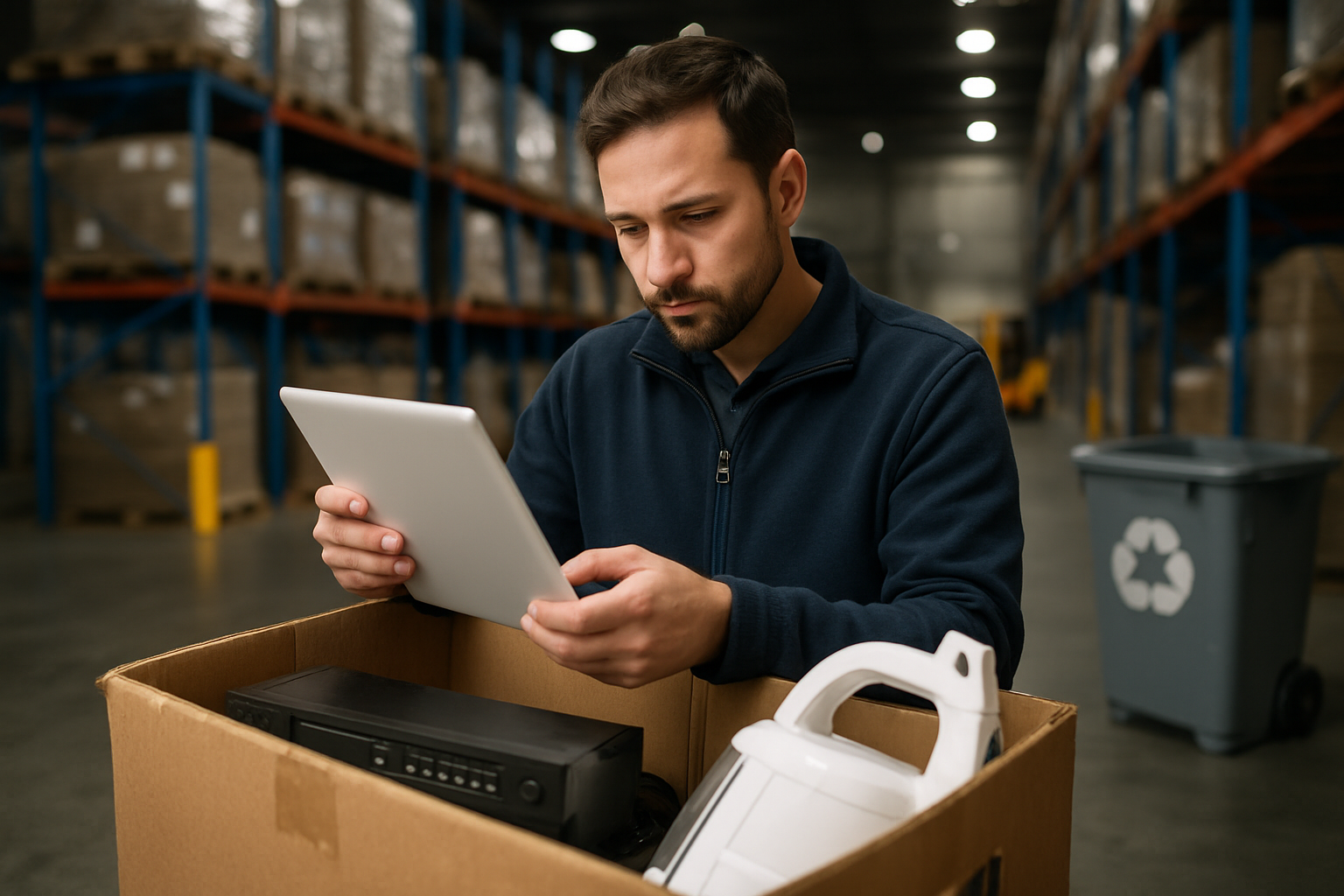Leveraging Reverse Logistics for Competitive Advantage
In today's fast-paced business environment, forward-thinking companies are discovering untapped potential in an often-overlooked area: reverse logistics. This strategic approach to managing returned products and materials is revolutionizing supply chains and creating new opportunities for cost savings, customer satisfaction, and environmental stewardship. As businesses face increasing pressure to optimize operations and reduce waste, reverse logistics is emerging as a critical factor in maintaining a competitive edge.

The Evolution of Reverse Logistics
Reverse logistics has come a long way since its inception. Initially, it was viewed merely as a way to handle product returns and dispose of unwanted goods. However, as businesses began to recognize the potential for cost savings and improved customer satisfaction, reverse logistics evolved into a more sophisticated process.
In the early days, companies often struggled with the complexities of managing returned products. The lack of dedicated systems and processes led to inefficiencies, increased costs, and missed opportunities for value recovery. As technology advanced and consumer behavior shifted, businesses started to invest in specialized software and infrastructure to streamline their reverse logistics operations.
Today, reverse logistics has become an integral part of many companies’ overall supply chain strategies. It encompasses a wide range of activities, including product returns, refurbishment, recycling, and even the repurposing of materials for new products. This holistic approach not only reduces waste but also creates new revenue streams and enhances brand reputation.
The Business Case for Reverse Logistics
Implementing a robust reverse logistics program can yield significant benefits for businesses across various industries. One of the primary advantages is cost reduction. By efficiently managing returns and refurbishing products, companies can minimize waste and recapture value from previously discarded items.
Moreover, a well-designed reverse logistics system can improve customer satisfaction and loyalty. In today’s competitive marketplace, consumers expect hassle-free return policies and sustainable practices. By offering smooth return processes and demonstrating a commitment to environmental responsibility, businesses can differentiate themselves from competitors and build stronger customer relationships.
Another compelling reason to invest in reverse logistics is the potential for new revenue streams. Refurbished products, for example, can be sold at a lower price point, appealing to cost-conscious consumers and expanding market reach. Additionally, recovered materials can be used in the production of new items, reducing raw material costs and supporting circular economy initiatives.
Challenges in Implementing Reverse Logistics
While the benefits of reverse logistics are clear, implementing an effective program is not without its challenges. One of the primary hurdles is the complexity of managing diverse product returns. Unlike forward logistics, where products typically follow a predictable path, reverse logistics deals with items in various conditions and at different stages of their lifecycle.
Another significant challenge is the need for specialized infrastructure and technology. Efficient reverse logistics operations require dedicated facilities for sorting, testing, and refurbishing products. Additionally, advanced software systems are necessary to track and manage the flow of returned items throughout the process.
Companies must also grapple with the unpredictable nature of product returns. Unlike traditional supply chain management, where demand can be forecasted with relative accuracy, the volume and timing of returns are often difficult to predict. This uncertainty can make resource allocation and capacity planning challenging.
Strategies for Successful Reverse Logistics Implementation
To overcome these challenges and maximize the benefits of reverse logistics, businesses should consider several key strategies. First and foremost, it’s crucial to develop a clear and comprehensive reverse logistics policy. This should outline processes for handling returns, refurbishment, and recycling, as well as guidelines for determining the most appropriate course of action for each returned item.
Investing in advanced technology is also essential for success in reverse logistics. Specialized software can help streamline processes, improve tracking and visibility, and provide valuable data for decision-making. Additionally, automation technologies can enhance efficiency in sorting and processing returned items.
Collaboration with partners across the supply chain is another critical factor. By working closely with suppliers, distributors, and even competitors, companies can create more efficient reverse logistics networks and share best practices. This collaborative approach can lead to improved sustainability outcomes and cost savings for all parties involved.
The Future of Reverse Logistics
As we look to the future, reverse logistics is poised to play an increasingly important role in business operations. The continued growth of e-commerce, coupled with rising environmental concerns, will drive further innovation in this field.
Emerging technologies such as artificial intelligence and the Internet of Things are set to revolutionize reverse logistics operations. These advancements will enable more accurate prediction of return volumes, optimize routing and processing decisions, and enhance the overall efficiency of reverse supply chains.
Furthermore, we can expect to see a greater emphasis on the circular economy, with reverse logistics playing a crucial role in closing the loop on product lifecycles. This shift towards a more sustainable approach to business will create new opportunities for companies that excel in reverse logistics management.
Key Strategies for Optimizing Reverse Logistics
• Conduct a thorough analysis of your current reverse logistics processes to identify areas for improvement
• Invest in specialized software and technologies to streamline operations and enhance visibility
• Develop clear policies and procedures for handling returns and processing refurbished items
• Train employees on the importance of reverse logistics and best practices for implementation
• Collaborate with supply chain partners to create more efficient reverse logistics networks
• Explore opportunities for value recovery through refurbishment, recycling, and repurposing
• Regularly review and update your reverse logistics strategy to adapt to changing market conditions
In conclusion, reverse logistics has evolved from a necessary evil to a strategic imperative for businesses seeking to gain a competitive edge. By efficiently managing product returns, refurbishment, and recycling, companies can reduce costs, improve customer satisfaction, and contribute to a more sustainable future. As technology continues to advance and consumer expectations evolve, those who master the art of reverse logistics will be well-positioned for success in the ever-changing business landscape.





